#Ancient History
Text

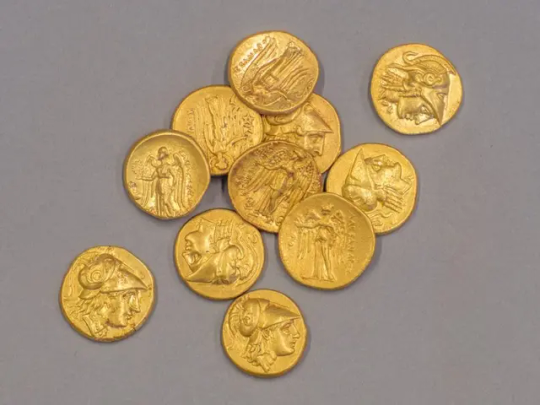
A collection of Greek gold and silver coins, including 11 gold staters bearing the portrait of Alexander the Great, uncovered in Crete in 2024. Dated to the 4th-3rd century BC
296 notes
·
View notes
Text
Panteón, Roma
(©️Pio Andrea Peri)
88 notes
·
View notes
Text
#satire#trey songz#Ancient History#river#soriku#pretty girl#[scott pilgrim]#hip hop#giorno giovanna#aziraphale x crowley
125 notes
·
View notes
Text
"Levitation Machine" Found In Egypt?
The Pyramid Code 👇
youtube
Remember they have lied about a whole lot of our history 🤔
#pay attention#educate yourselves#educate yourself#knowledge is power#reeducate yourself#reeducate yourselves#think about it#think for yourselves#think for yourself#do your homework#do some research#do your own research#ask yourself questions#question everything#pyramids#pyramid code#youtube#documentary#hidden history#ancient history#history lesson#history
63 notes
·
View notes
Text

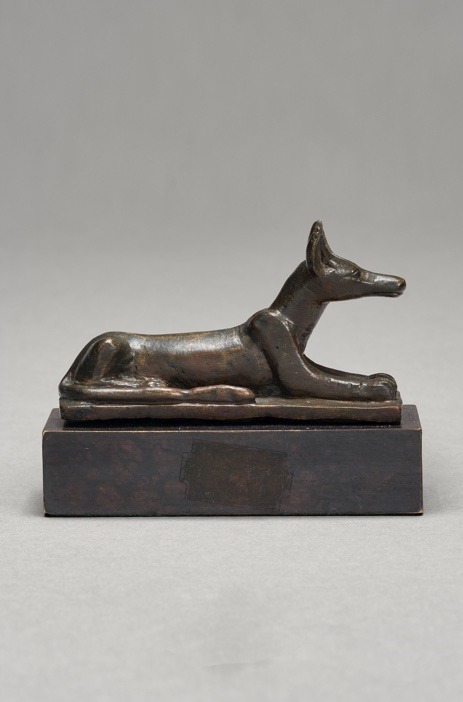
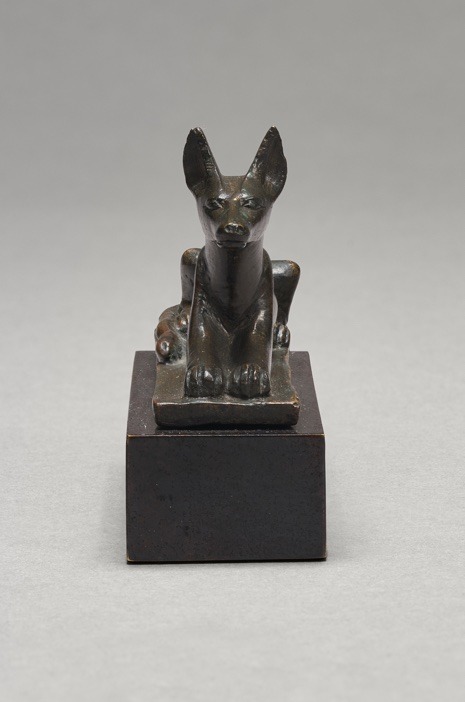
AN EGYPTIAN BRONZE RECLINING JACKAL
LATE PERIOD, 664-332 B.C.
#AN EGYPTIAN BRONZE RECLINING JACKAL#LATE PERIOD#664-332 B.C.#bronze#bronze statue#bronze sculpture#ancient artifacts#archeology#archeolgst#history#history news#ancient history#ancient culture#ancient civilizations#ancient egypt#egyptian history#egyptian antiquities#egyptian art
35 notes
·
View notes
Text
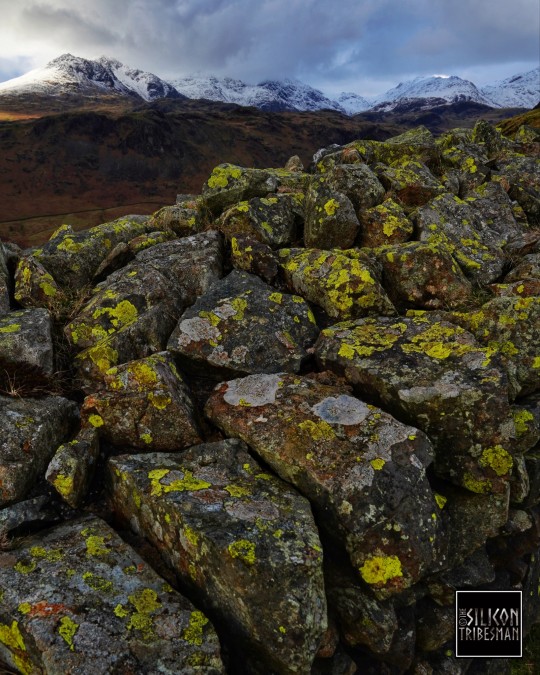

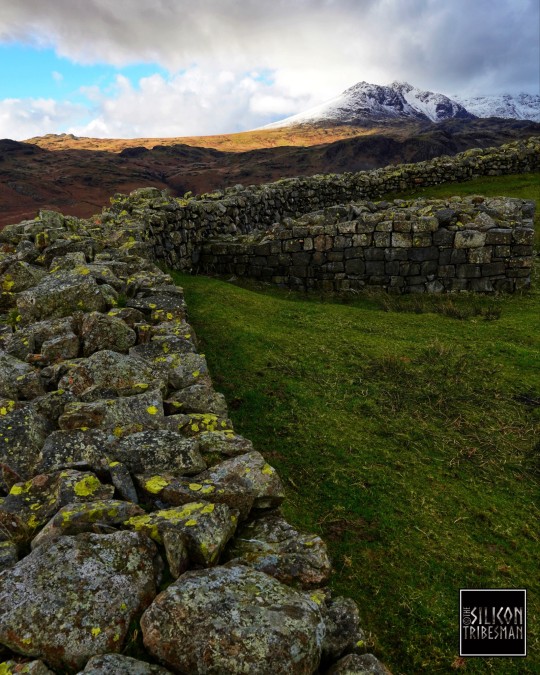



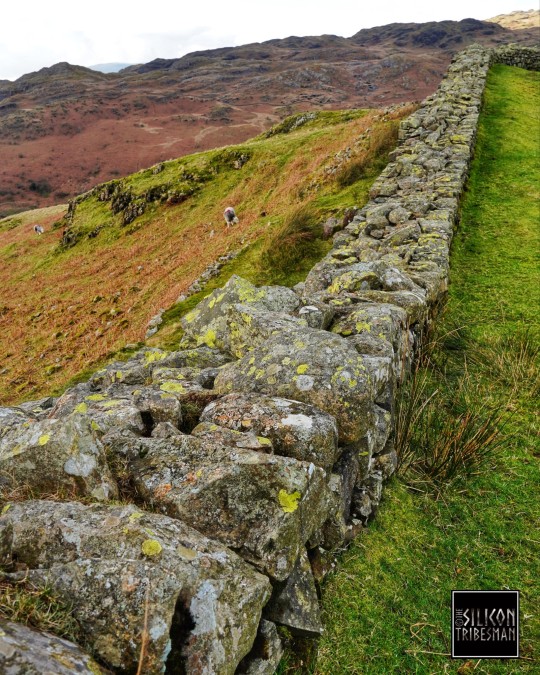
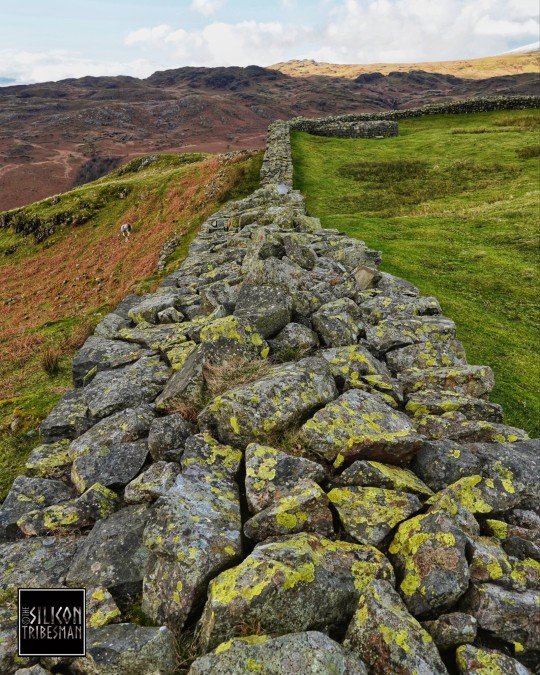

Hardknott Roman Fort, Hardknott Pass, Lake District
#Roman#romans#roman living#roman britain#roman army#roman soldiers#roman fort#hardknott pass#roman road#routeways#wild places#outdoors#landscape#stoneworks#roman ruins#archaeology#prehistory#ancient history
39 notes
·
View notes
Text


the warm golden glow of athens
#athens#greece#city#steet photography#architecture#ancient history#ancient greece#ruins#archaeology#light academia#sunlight#golden hour#photographers on tumblr#original photographers#lensblr#diary
19 notes
·
View notes
Text
The origin of all Astrology.
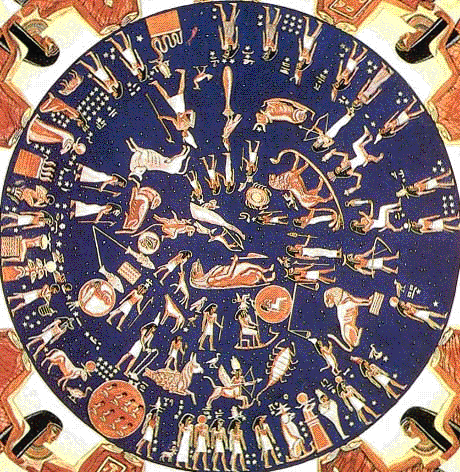
Goes back to the Dendera Tablet of Ancient Kush-Kemet, presently known as Egypt in the heart of North Africa.
A key to all Astronomy & the calendar itself. Eternally grateful for the knowledge! 🫶🏾
All of the planets can be linked to what they call “Neter”… what we presently know today as Gods and Goddesses. They were transcribed into Greco-Roman religion, but the myths are true to the original.
#astroHistory
#astrology observations#astro#ancient history#astronomy#astrological houses#african history#africa#kemet#kemetic#ancient egypt#kush kemet#sekhmet#isis goddess#thoth#osiris#heru#horus#anubis#black history#african queen#astrology#pluto#mars#neptune#jupiter#aphrodite#venus#divine feminine#black girl aesthetic#greek mythology
17 notes
·
View notes
Text
"Blorbo from my shows" no. Blorbo from my BA. Blorbo from my major. Blorbo from my primary source document.
#this is how i feel about orestes and antilochus#you all get it#tagamemnon#classics#history#ancient history
27K notes
·
View notes
Text

EDITED TO ADD: Sources from the OP in the comments
#trans#nonbinary#trans nonbinary#ancient history#sumer#gender#we have always been here#historical trans people#you cannot legislate us away and you cannot wipe us out while humanity still exists#we are as perennial as the grass#inanna#trans is sacred
26K notes
·
View notes
Text
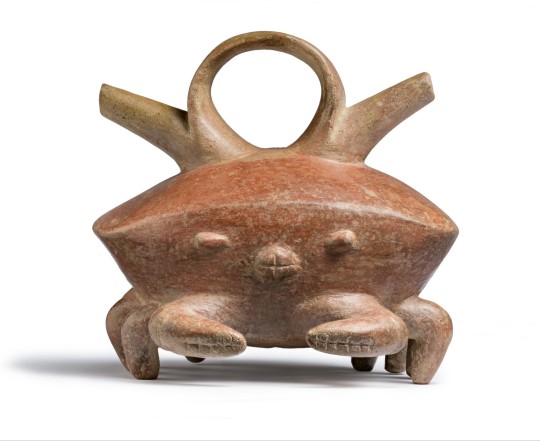

~ Crab Vessel with Double Spout.
Place of origin: Colombia, Calima Region
Period: Ilama Period
Date: 1500 B.C.-A.D. 100
Medium: Ceramics
#ancient#ancient art#history#museum#archeology#ancient history#archaeology#ancient pottery#pottery#south america#crab#crab vessel#calima#Colombia#pre columbian#Ilama Period#1500 b.c.#a.d. 100
16K notes
·
View notes
Text

Gold swivel ring with carnelian intaglio, Greece, 5th century BC
from Christies
196 notes
·
View notes
Text

2,300-Year-Old Plush Bird from the Altai Mountains of Siberia (c.400-300 BCE): crafted with a felt body and reindeer-fur stuffing, all of which remains intact
This artifact was sealed within the frozen barrows of Pazyryk, Siberia, for more than two millennia, where a unique microclimate enabled it to be preserved. The permafrost ice lense formation that runs below the barrows provided an insulating layer, preventing the soil from heating during the summer and allowing it to quickly freeze during the winter; these conditions produced a separate microclimate within the stone walls of the barrows themselves, thereby aiding in the preservation of the artifacts inside.
This is just one of the many well-preserved artifacts that have been found at Pazyryk. These artifacts are attributed to the Scythian/Altaic cultures.
Currently housed at the Hermitage Museum.
#archaeology#anthropology#history#artifact#artifacts#siberia#scythians#archeology#museum#amazing#interesting#stuffed animals#ancient history#prehistoric#crafting#felt art#art#prehistoric art#hermitage museum#human nature
45K notes
·
View notes
Text
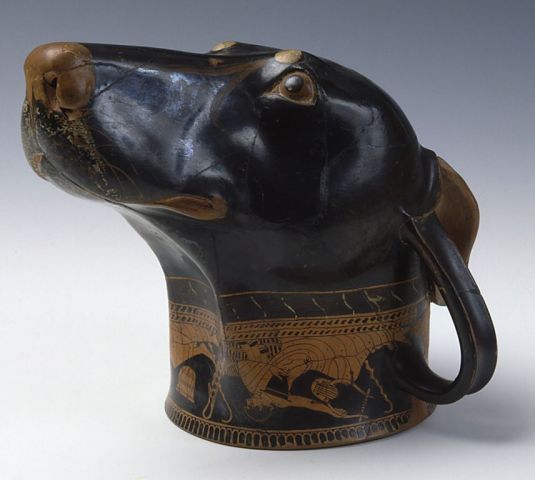
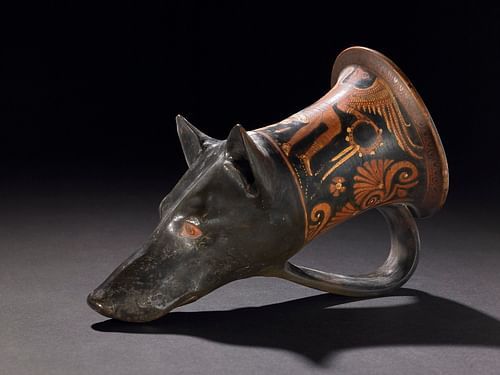
(Approx.) 4th Century BCE Good Boys
#ancient greece#ancient history#mug#mugs#ceramics#art#dogs#dogs of tumblr#dogblr#lol#we never change#do we#pottery#ceramic art#ceramic mug#cute animals#animals
19K notes
·
View notes
Text
Keystone Unlocks Sphinx's Head? 🤔
#pay attention#educate yourselves#educate yourself#knowledge is power#reeducate yourself#reeducate yourselves#think about it#think for yourselves#think for yourself#do your homework#do some research#do your own research#ask yourself questions#question everything#sphinx#hidden history#ancient history#history lesson#history#you decide
48 notes
·
View notes
Text
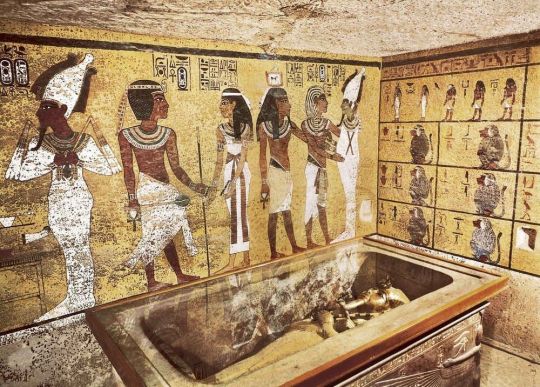
‘Curse’ Behind King Tutankhamun’s Tomb Mysterious Deaths Finally Solved
The unsettling curse of King Tutankhamun’s tomb in Egypt has bewildered archaeologists since it’s been feared to be linked to the mysterious deaths of multiple excavators who discovered it in 1922.
However, a scientist now claims to have solved the mysteries of the infamous “Pharaoh’s Curse” more than 100 years later.
Toxic levels of radiation emanating from uranium and poisonous waste are believed to have lingered inside the tomb since it was sealed over 3,000 years ago, Ross Fellowes wrote last month in the Journal of Scientific Exploration (JSE).

The burial chamber in the tomb of Tutankhamun, near Luxor, Egypt.
The radiation level inside Tutankhamun’s tomb is so high that anyone who comes in contact with it could very likely develop a fatal dose of radiation sickness and cancer.
“Both contemporary and ancient Egypt populations are characterized by unusually high incidences of hematopoietic cancers, of bone/blood/lymph, for which a primary known cause is radiation exposure,” Fellowes wrote in his study.
However, this radioactivity isn’t isolated to Tutankhamun’s tomb.
Fellowes revealed that “unusually high radiation levels have been documented in Old Kingdom tomb ruins” and spread throughout sites in Egypt.
“Radiation has been detected by the Geiger counter at two sites at Giza adjacent to the pyramids,” he wrote, adding that radon — a radioactive gas — has also been detected in “several underground tombs at Saqqara.”
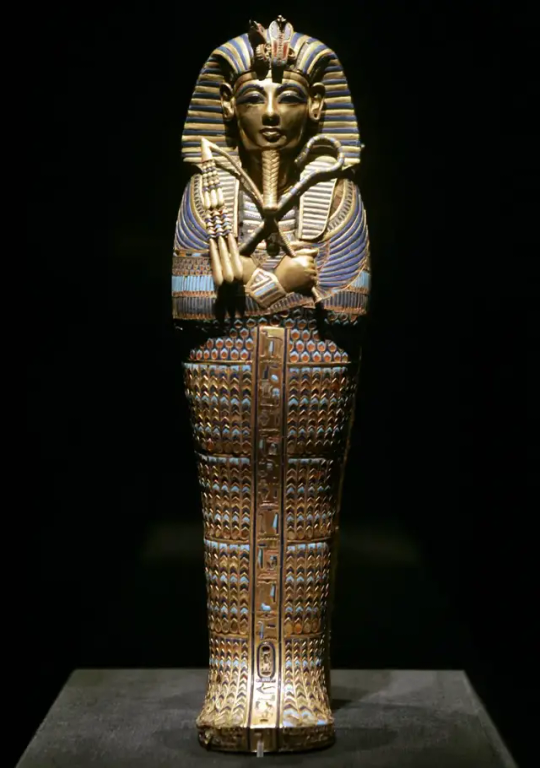
The “Coffinette for the Viscera of Tutankhamun,” which contained the king’s mummified liver, depicts him as Osiris, holding a crook and flail.

Medical imagery of Tutankhamun is shown above a replica of King Tut’s skull on display during the “Tutankhamun And The Golden Age Of The Pharaohs” at the Los Angeles County Museum of Art in California.
These readings were all found to be “intensely radioactive.”
“Modern studies confirm very high levels of radiation in ancient Egyptian tombs, in the order of 10x accepted safety standards,” the study shared.
It’s also theorized that those who built the ancient tombs were aware of the toxins based on the eerie warnings carved on the walls.
“The nature of the curse was explicitly inscribed on some tombs, with one translated presciently as, ‘they that break this tomb shall meet death by a disease that no doctor can diagnose,’” Fellowes wrote.
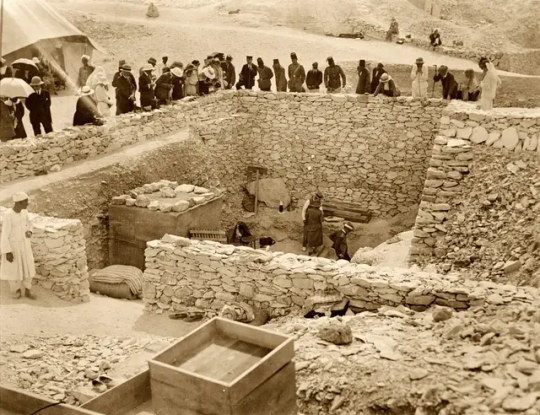
Outside the tomb of Tutankhamun during the 1922 excavation in the Valley of the Kings in Egypt.
Other ominous translations like “forbidden” because of “evil spirits” may have significantly fueled the fear that supernatural curses lingered in the ancient sites.
Those fears intensified with the mysterious deaths of Lord Carnarvon, who funded the excavation in 1922 and reportedly walked through the treasured filled rooms — and multiple others after they unsealed the tomb.
“Carnarvon was dead within a few weeks of the uncertain diagnosis of blood poisoning and pneumonia,” Fellowes wrote.
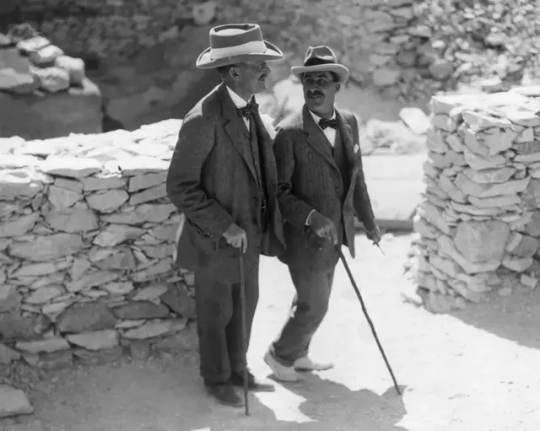
Egyptologist Howard Carter (R) walks with archaeologist Lord Carnarvon, the patron of his research, outside the tomb of King Tutankhamun in 1922.
Egyptologist Arthur Weigall allegedly told colleagues that Carnarvon would “be dead within six weeks” upon entering, the study claimed.
Howard Carter, the first person to walk inside Tutankhamun’s tomb with Carnarvon, died in 1939 after a long battle with Hodgkin’s lymphoma, which was suspected to be caused by radiation poisoning.
British Egyptologist and independent excavator Arthur Weigall was present at the opening of Tut’s Tomb and is also credited with starting the ‘myth’ of the curse.
He died of cancer at 54 years old in 1934.
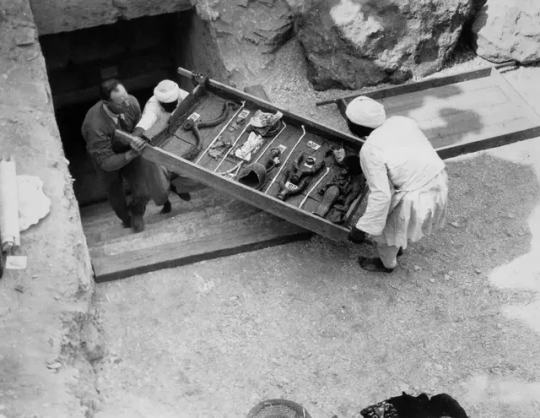
Workers remove a tray of chariot parts from the Tomb of Tutankhamun in the Valley of the Kings, Egypt, in 1922.
In total, six of the 26 people present when the tomb was opened died within a decade from asphyxia, stroke, diabetes, heart failure, pneumonia, poisoning, malaria and X-ray exposure.
While the deaths can be seen as odd, the curse theory was also likely fueled by the oddities that happened when it opened.
Carnarvon had reportedly suffered a mosquito bite that became severely infected.
Around the time excavators opened the tomb, Cairo reportedly suffered a bizarre power outage and a freak sandstorm, according to National Geographic.’
At one point during the excavation, Carnarvon’s favorite dog allegedly let out a chilling howl and suddenly dropped dead.
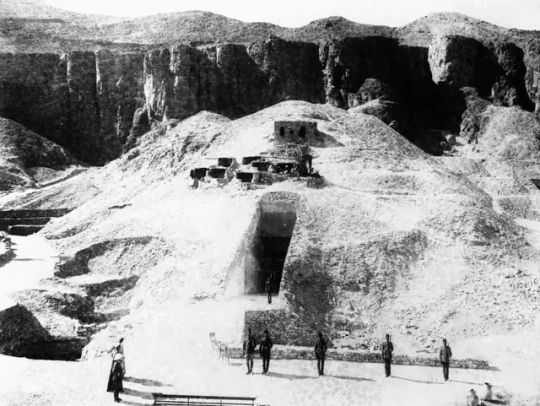
A photograph showing guards standing outside the tomb of Tutankhamun in Egypt in 1922.

A sacred cow being removed from Tomb of Tutankhamun in 1922.
From a historical perspective, the discovery of the tomb in the Valley of Kings is considered one of the most fascinating finds that gave modern society a glimpse into the Egyptian royalty voyage into the afterlife.
Five thousand items, including solid gold funeral shoes, statues, games, and strange animals, were discovered inside Tutankhamun’s tombs.
It would take the excavators ten years to clear the tomb of its treasure.
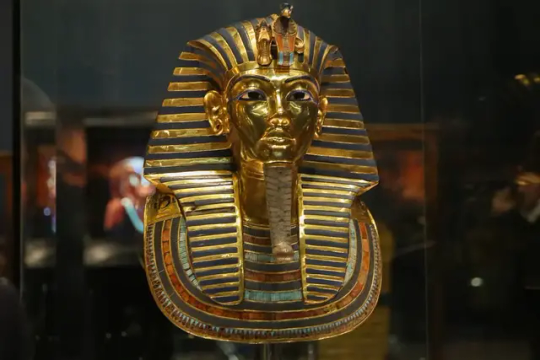
The golden funerary mask of Tutankhamun.
The unsealing and studying of the tomb is also credited with launching the modern era of Egyptology.
Tutankhamun took the throne as pharaoh around nine or ten years old and ruled between 1332 BC and 1323 BC.
However, he died by the time he turned 18.
There are no surviving records of Tutankhamun’s death and how the young pharaoh died remains a mystery.
However, Tutankhamun is suspected to have suffered from several health issues — likely linked to his father, Akhenaten, and his mother, Nefertiti, being brother and sister.
By Richard Pollina.
#‘Curse’ Behind King Tutankhamun’s Tomb Mysterious Deaths Finally Solved#King Tutankhamun#Pharaoh’s Curse#Old Kingdom#Valley of the Kings#Lord Carnarvon#Howard Carter#Egyptology#ancient artifacts#archeology#archeolgst#history#history news#ancient history#ancient culture#ancient civilizations#ancient egypt#egyptian history#egyptian mythology#egyptian pharaoh#egyptian antiquities#egyptian art
28 notes
·
View notes